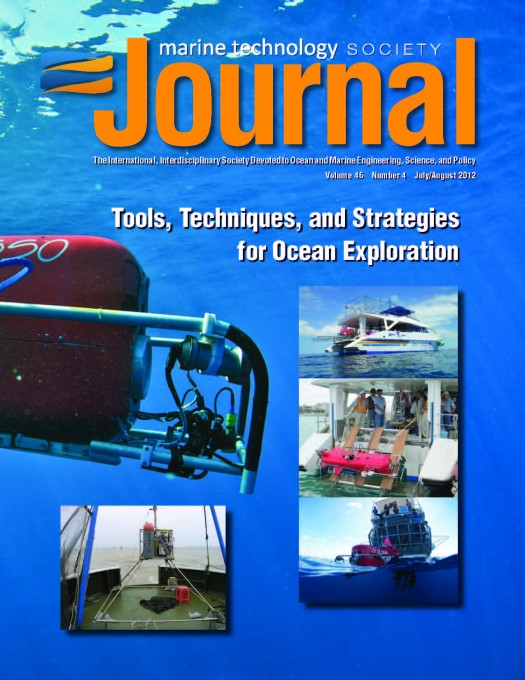We are pleased to announce the publication of a new paper regarding new technologies and the evolution of experimental methods in the first two years of the Southern California Behavioral Response Study (SOCAL-BRS). The reference, abstract, and where to acquire the article are given below.
Brandon L. Southall, David Moretti, Bruce Abraham, John Calambokidis, Stacy L. DeRuiter, Peter L. Tyack. (2012). Marine Mammal Behavioral Response Studies in Southern California: Advances in Technology and Experimental Methods. Marine Technology Society Journal 46(4), 46-59.
ABSTRACT: Behavioral response studies (BRS) are increasingly being conducted to better understand basic behavioral patterns in marine animals and how underwater sounds, including from human sources, can affect them. These studies are being enabled and enhanced by advances in both acoustic sensing and transmission technologies. In the design of a 5-year project in southern California (“ SOCAL-BRS), the development of a compact, hand-deployable, ship-powered, 15-element vertical line array sound source enabled a fundamental change in overall project configuration from earlier efforts. The reduced size and power requirements of the sound source, which achieved relatively high output levels and directivity characteristics specified in the experimental design, enabled the use of substantially smaller research vessels. This size reduction favored a decentralization of field effort, with greater emphasis on mobile small boat operations capable of covering large areas to locate and tag marine mammals. These changes in configuration directly contributed to significant increases in tagging focal animals and conducting sound exposure experiments. During field experiments, received sound levels on tagged animals of several different species were within specified target ranges, demonstrating the efficacy of these new solutions to challenging fi eld research problems.
Keywords: marine mammals, noise, underwater sound, transducer, behavioral response study
A .pdf of this article is available for professional use at www.socal-brs.org or by request from Brandon.Southall@sea-inc.net. Information regarding MTSJ and this issue of the journal is given below:
“The Marine Technology Society is a not-for-profit, international, professional association. Founded in 1963, the Society believes that the advancement of marine technology and the productive, sustainable use of the oceans depend upon the active exchange of ideas between government, industry and academia. See www.mtsociety.org.”
Access the MTS Journal online at
www.mtsociety.org/mts_journal/online.aspx
Techniques, and Strategies for Ocean Exploration
Volume 46, Number 4

Journal Preview
The world’s seafloor for which we have first-hand accounts, detailed maps, and samples remains minuscule, new vehicles, instrumentation, and strategies will be needed to shape our current and future exploration programs. This issue presents a number of papers that illuminate different aspects of ocean exploration.
Table of Contents
Message from the MTSJournal Editor
Ann E. Jochens
Multiplatform Ocean Exploration: Insights From the NEEMO Space Analog Mission
Arthur C. Trembanis, Alex L. Forrest, Douglas C. Miller, Darlene S. S. Lim,
Michael L. Gernhardt, William L. Todd
The Untethered Remotely Operated Vehicle PICASSO-1 and Its Deployment From Chartered Dive Vessels for Deep Sea Surveys Off Okinawa, Japan, and Osprey Reef, Coral Sea, Australia
Dhugal J. Lindsay, Hiroshi Yoshida, Takayuki Uemura, Hiroyuki Yamamoto, Shojiro Ishibashi, Jun Nishikawa, James D. Reimer, Robin J. Beaman, Richard Fitzpatrick, Katsunori Fujikura,Tadashi Maruyama
A New System for Three-Dimensional High-Resolution Geophysical Surveys
Peter Sack, Tor Haugland, Graeme Stock
Implementation of a Seafloor Sediment Corer With a Novel Hydrostatic Motor
Jianjun Wang, Huawei Qin, Ying Chen
Marine Mammal Behavioral Response Studies in Southern California: Advances in Technology and Experimental Methods
Brandon L. Southall, David Moretti, Bruce Abraham, John Calambokidis,
Stacy L. DeRuiter, Peter L. Tyack
Observations of Nepheloid Layers in the Yangtze Estuary, China, Through Phase-Corrupted Acoustic Doppler Current Profiler Speeds
Zhenyi Cao, Xiao Hua Wang, Weibing Guan, Les J. Hamilton, Qi Chen, Dedi Zhu
Investigating the Influence of the Added Mass Effect to Marine Hydrokinetic Horizontal-Axis Turbines Using a General Dynamic Wake Wind Turbine Code
David C. Maniaci, Ye Li
